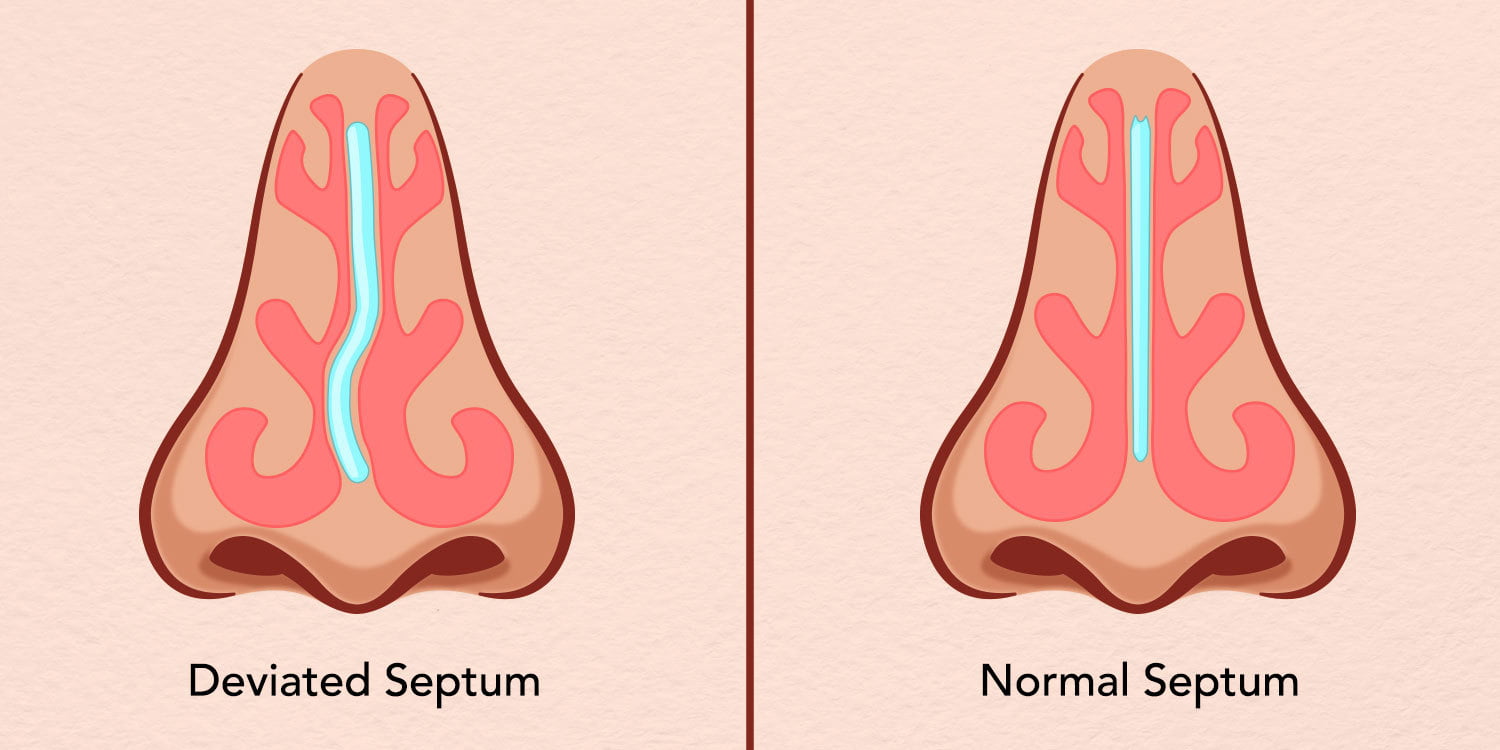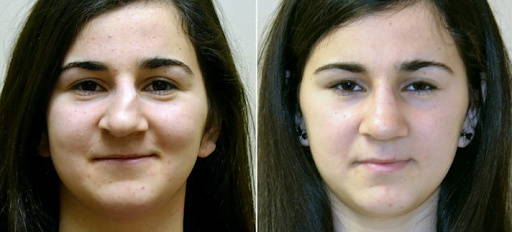Do I Have a Deviated Septum? A Board Certified Cosmetic Surgeon Weighs In

If you suffer from frequent sinus infections, nasal congestion, breathing issues, or a visible nasal deformity, there’s a good chance you may have a deviated septum. Deviated septums are a very common medical issue, affecting up to 80% of people in the U.S.
While deviated septums can range in severity, symptoms can persist and even worsen if left untreated. In this post, board certified Seattle cosmetic surgeon Dr. Alexander Sobel explains how to diagnose and treat a deviated septum.
What is a septum?
The nasal septum is a thin wall made of bone and cartilage that divides your nasal passages. Its main function is to provide structural support for the nose and to help regulate air flow through the nasal cavities. A healthy septum divides the nostrils evenly in half.
What is a deviated septum?
A deviated septum is when the septum deviates from the center of the nose, causing one nasal passage to be larger than the other.

Deviated Septum vs Normal Septum – Anderson Sobel Cosmetic Surgery
How do I know if I have a deviated septum?
Some people who suffer from a deviated septum have a crooked nasal bridge or twisted nasal tip, but many people have no visible symptoms. A severely deviated septum can block one or both of your nasal passages, causing breathing issues, headaches, nosebleeds, sinus infections, snoring, sleep apnea, and other medical concerns. A mildly deviated septum may not cause any noticeable issues.
What can cause a deviated septum?
There are a number of reasons why people may develop a deviated septum. These include:
- Injury. Any injury to the nose can displace the septum. Common causes of a deviated septum include sports injuries, falls, car accidents, and physical altercations.
- Birth defect. A septum can become deviated due to pregnancy complications.
- Nose growth. Believe it or not, the most common reason people develop a deviated septum is from normal nose growth. Our septums grow along with the rest of our nose, and can sometimes grow away from the center.
How can I correct my deviated septum?
Nasal surgery is almost always needed to correct a deviated septum. While some of the symptoms of a deviated septum can be treated using an adhesive strip, nasal decongestants, and/or antihistamines, these OTC remedies will not actually correct a crooked septum.
Further, nasal decongestants can be harmful if used for more than a few days and should be used for limited reasons. Antihistamines, though an important part of the medical treatment of certain nasal airflow problems, can affect other beneficial systems within the upper airway.
Nasal surgery is almost always needed to correct a deviated septum.
Septoplasty vs. Cosmetic Rhinoplasty vs. Functional Rhinoplasty
Three forms of nasal surgery are typically discussed when it comes to treating a deviated septum: septoplasty, cosmetic rhinoplasty, and functional rhinoplasty.
- Septoplasty addresses the internal structure of the nose, particularly the septum. When performed alone, it is typically used to correct a deviated septum that does not affect the outer appearance of the nose (since septoplasty does not include reshaping of external tissues).
- Cosmetic rhinoplasty is performed as a cosmetic procedure to improve the appearance of the nose and increase facial harmony—but your procedure plan may also incorporate septoplasty to correct a deviated septum and improve function of the nasal passages.
- Functional rhinoplasty addresses other key nasal airflow structures, especially the other parts of the internal nasal valve and nasal septum, the external nasal valve, and, more rarely, the nasal bone structure.
Patients looking to treat a deviated septum via septoplasty often choose to incorporate cosmetic and/or functional rhinoplasty to also enhance the appearance and function of the nose. Correcting a deviated septum can be an opportunity to correct a long-standing aesthetic issue you’ve had with your nose, since you’ll already be undergoing surgery.

This 20-year-old patient broke her nose when she was a child, resulting in a deviated septum and crooked nasal bridge (seen in left photo). After her combined rhinoplasty & septoplasty procedure (seen in right photo), she noted her breathing and sense of taste were improved, as well as her confidence in her appearance. Photos courtesy of Anderson Sobel Cosmetic Surgery.
More rhinoplasty resources:
What happens if a deviated septum is left untreated?
If a deviated septum is left untreated, or if it is treated incorrectly, your symptoms may persist and even worsen. For this reason, it’s important to consult with a medical provider as soon as a deviated septum is suspected.
However, if your septum is only mildly deviated (which many are) and you have no negative symptoms, treatment may not be necessary.
Will insurance cover my rhinoplasty if I have a deviated septum?
Insurance will not cover rhinoplasty that is performed for purely cosmetic reasons; however, a rhinoplasty may be covered by insurance if it is a functional rhinoplasty, which serves to correct nasal airflow obstruction issues, like those caused by a deviated septum. Dr. Sobel can discuss whether or not your insurance may cover a rhinoplasty during a personal consultation.
A rhinoplasty may be covered by insurance if it serves to correct nasal airflow obstruction issues, like those caused by a deviated septum.
Choose Dr. Sobel for your Seattle rhinoplasty
If you suspect you have a deviated septum or wish to enhance the appearance of your nose, board certified cosmetic surgeon Dr. Alexander Sobel would be happy to discuss septoplasty and rhinoplasty with you. During your personal consultation, Dr. Sobel will explain how your nasal bones and cartilage can be sculpted to correct a deviated septum and reshape your nose. Schedule your consultation online or call (425) 453-9060 to speak to one of our patient care coordinators.